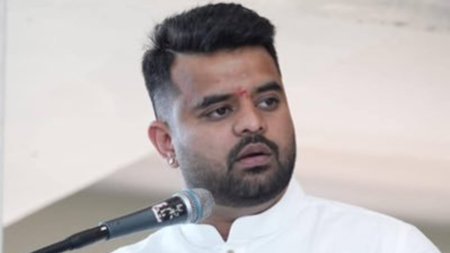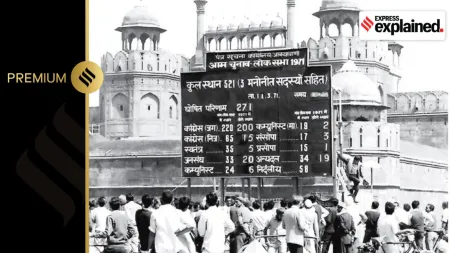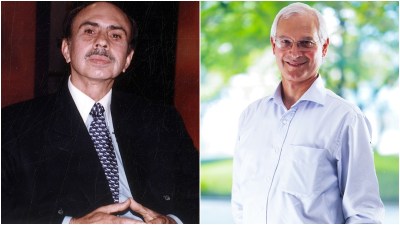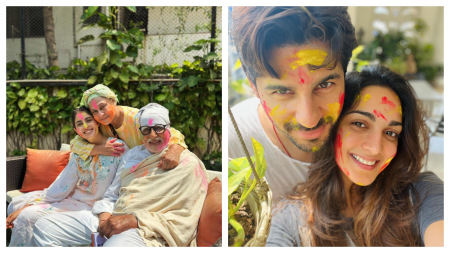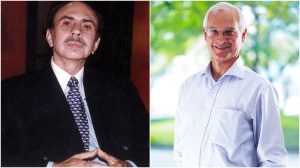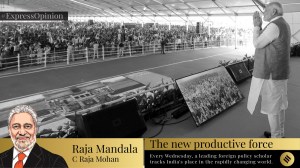- India
- International
Bimal Roy: The filmmaker who inspired Satyajit Ray, showed mirror to the society seven decades ago
On Bimal Roy's 114th birth anniversary, we look back at his passion towards filmmaking and how he redefined Hindi cinema with films like Bandini, Sujata and Do Bigha Zamin.
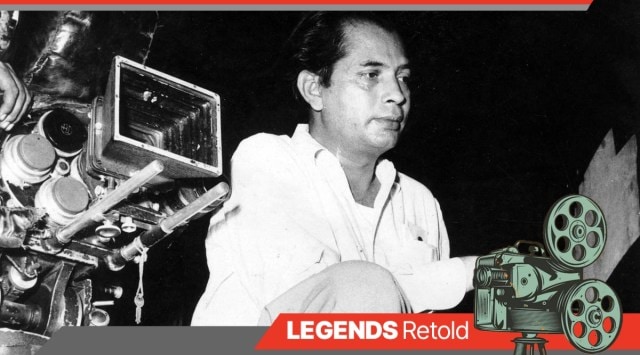 Film director Bimal Roy love for cinema was such that he rarely spent time at home with his family. (Express archive photo)
Film director Bimal Roy love for cinema was such that he rarely spent time at home with his family. (Express archive photo) When you think about socially relevant cinema today — films with contemporary issues at their heart — only a handful of names lead the way. Among them are Anubhav Sinha, Hansal Mehta, and perhaps Aamir Khan. But none are even close to Bimal Roy, the pioneer of Indian cinema. An auteur filmmaker, who belonged to the Golden Age of cinema, Bimal was among the first few filmmakers who realised and harnessed the power of cinema in reflecting reality and demanding social change.
But don’t mistake him for someone who would suck the life out of a story to dole out a powerful message; Roy was never a preacher. The messages he wanted to convey always came intertwined with engaging and entertaining stories that touched a deep chord in the hearts of the audience. How often would you see the issue of caste discrimination being addressed through a love story? This is what Roy did in his 1959 film Sujata, starring Nutan and Sunil Dutt. The film is a story of an orphan girl, born in a lower-caste family, and then adopted by an upper-caste family, but she fails to find acceptance in her upper-class ‘family’ and the society.
“My husband only believed in humanism. The exploitation of unfortunate people by other people always hurt him very deeply. So, he wanted to show it (in his movies) so that people can realise what they are doing. He didn’t want to be a preacher, he just felt strongly about these things,” Roy’s wife Manobina Roy said in the documentary, Remembering Bimal Roy.
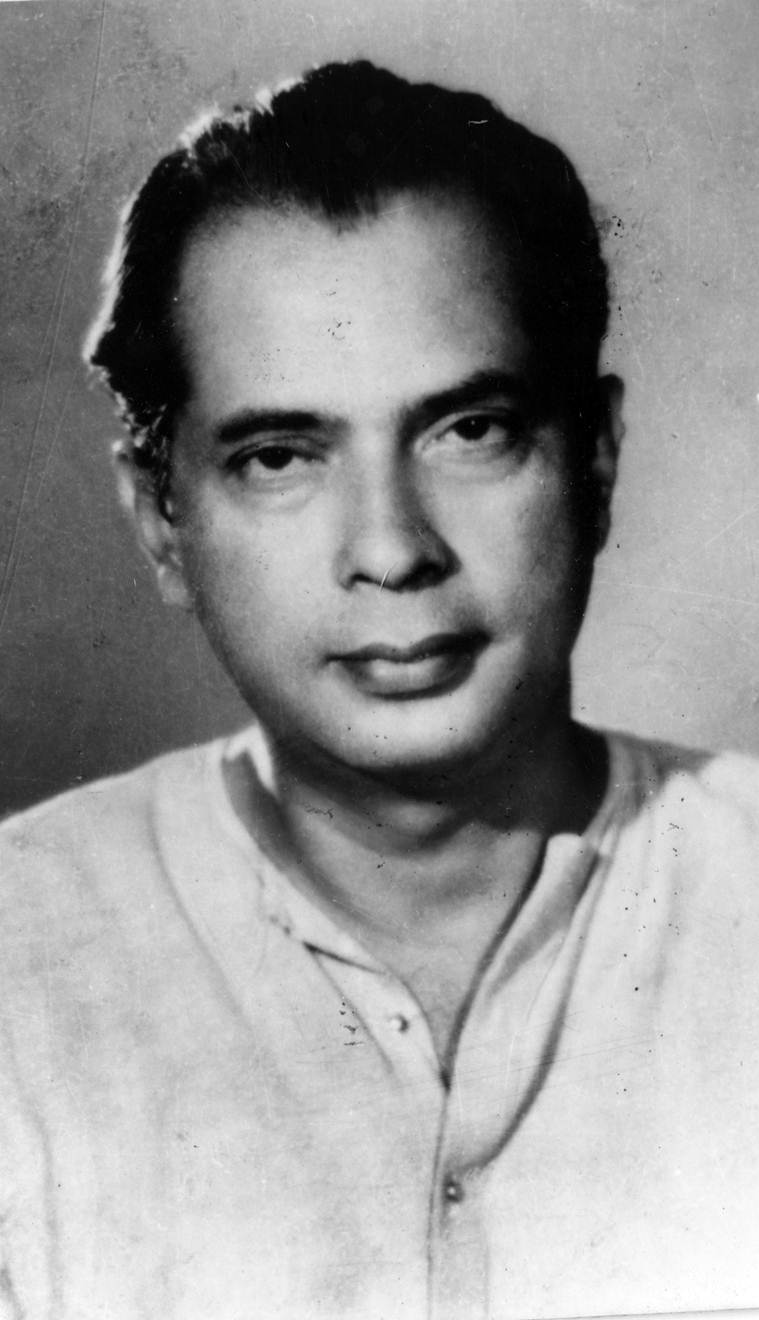 Film director Bimal Roy. (Express archive photo)
Film director Bimal Roy. (Express archive photo)
Today we celebrate every time there’s a strong portrayal of women in films, but Roy did it seven decades ago, and in a much better fashion. The women in his films had agency — be it in Bandini (1963), Sujata (1959) or Do Bhiga Zamin (1959), the women were never a foil to the men and had their own individuality.
Shoma A Chatterji, the author of a book on Roy, said, “He belonged to a time and a space that honed his idealistic sensibility in the sense that all his films bear a social agenda without holding a flag aloft for ‘causes’ or without raising slogans.”

Bimal Roy was born in 1909 into a landholding family in a small village in present-day Dhaka, Bangladesh. But he had to move to Kolkata with his mother and infant brothers after being duped by the ‘munshi’ of the family after his father’s demise. As he struggled to find work, he was hired by filmmaker Promothesh Barua, who made Devdas (1935), as a publicity photographer. He then moved on to the set of filmmaker Nitin Bose and worked as an assistant cameraman at Calcutta’s (now Kolkata) New Theatres Studios.
Film journalist BK Karanjia was quoted as saying in the book Bimal Roy: The Man Who Spoke in Pictures, “After a period of apprenticeship under Nitin Bose, a Dacca-born cinematographer, Bimal Roy, was put at the helm in Daku Mansoor (1934). A string of films followed, including Devdas, Manzil, and Maya. But it was the evocative outdoor camera work for Barua’s Mukti that made Bimal Roy a star.” And from here began Roy’s enigmatic journey in the world of cinema.
His debut film Udayer Pathe (1944), which chronicled the struggles of a writer, established him as a cult filmmaker in the Kolkata film circuit. After the film’s release, filmmaker Ritwik Ghatak had said, “Bimal Da literally pulled the Bengali cinema out of the abyss.” The film also got Bimal Roy fans in then-aspiring filmmakers, Satyajit Ray, and Mrinal Sen.
However, Roy shifted base to Bombay (Mumbai) in the aftermath of World War II and the Partition. His daughter Rinki Bhattacharya revealed in her book that Roy told his friend Hitu about his apprehension in moving to Bombay, who then talked to Ashok Kumar and Savak S Vacha, and got him hired as a director at Bombay Talkies. She claimed that her father was paid somewhere around Rs 25,000 for directing his first Hindi film Maa.
But the filmmaker was well aware of the fact that if he had to make the kind of cinema he aspires, he will have to produce his films. Hence, the production house, Bimal Roy Productions, which was inaugurated with a gem like Do Bigha Zameen (1953) came into existence. Roy produced one masterpiece after another under his production banner and gave films like Biraj Bahu (1954), Naukari (1955), Devdas (1955), Madhumati (1958), Sujata (1959), Parakh (1960) and Bandini (1963).
Though all his films picked up on a socially relevant theme, one thing which stayed common was the brilliant camerawork. “Bimal Roy’s works stand out for their photography. He took great care to reveal the light source and introduced a sense of time. More importantly, it connected one to reality. You could tell what time of the day a situation was taking place,” filmmaker Shyam Benegal said of Roy’s work in Bimal Roy The Man Who Spoke in Pictures.
 Film star Bharat Bhushan, Bimal Roy and Pradeep Kumar. (Express archive photo on 28.01.1955)
Film star Bharat Bhushan, Bimal Roy and Pradeep Kumar. (Express archive photo on 28.01.1955)
Noted lyricist Gulzar also found technical finesse in Roy’s work. “In all his films, you can see the technical finish. When Nutan prepares the poison in Bandini, you can see welders at work. The bottle of poison is seen in the reflection of the welding light. It was one of the most beautiful, marvellous sequences ever build up in Hindi cinema, when there were no computers,” Gulzar noted in the documentary, Remembering Bimal Roy.
The opening shot of Do Bigha Zamin, where the farmers are making merry on seeing clouds after a drought for two years and singing and dancing to “Hariyala Sawan Dhol Bajata”, had inspired filmmaker Ashutosh Gowariker. He gave his film Lagaan a similar opening with Aamir Khan’s Bhuvan and others celebrating the advent of rain and singing “Ghanan Ghanan Ghir Aaye Badra”.
Roy won accolades for his work from all corners. He won the Filmfare Award for Best Director three years in succession, for Madhumati, Sujata, and Parakh. Do Bigha Zamin was showcased at the International Prize Competition at Cannes Film Festival and received critical acclaim. It was awarded the Prix International de la Critique (International Critics’ Prize). But Roy never craved for any such recognition. “Fame was just a by-product. He was doing what he was doing for the love of it. He was driven by that idealism instead of being driven by either power, money or fame,” his daughter Aparajita Sinha said in an interview.
Amrit Shah, Business Manager Bimal Roy Productions, recalled in the documentary on Roy, how Roy’s wife Manobina Roy bought a bungalow and gave him the task him to convince Roy about it. Shah went up to the renowned filmmaker and said, “Bimal Da, lesser people than you have purchased cars, flats, property, and farms, what have you done? You have purchased nothing. This (bungalow) was available at a very reasonable price, so we purchased it. The comment he made was, ‘I don’t make films to purchase property, Mr Shah.'”
Not just this, but his love for cinema was such that he rarely spent time at home with his family. His wife, a celebrated photographer, said in one of her interviews, shared by Wilderness Films, “Even on Sundays he would go to the studio. He barely had time. There was no holiday for him. He would come very late in the night. It would be a very special day when he would come home by evening. I used to be so happy that I wanted to celebrate it.”
The filmmaker kept his work and family life separate and didn’t like his children visiting the sets. “I was usually asleep when he came back home because, in filmmaking, there are no 9 to 5 timings,” his daughter Aparajita was quoted as saying in an article published by the Film Critics Circle of India.
Though Roy was virtually absent at home, he mentored many on his film sets. Filmmaker Hrishikesh Mukherjee, who moved to Bombay from Kolkata with him, saw a father figure in him. Gulzar couldn’t forget the one ‘fatherly’ line that Roy told him at the very beginning of his career. He recalled in the documentary on Roy, “I told him I work at a motor garage but I have a passion for literature. He told me, ‘You are not going to the motor garage again, that is not your place.’ This one sentence which I longed to hear from my family, my father, I heard that fatherly voice from Bimal Da.”
All the actors who worked with him, from Dilip Kumar, Nutan to Vyjanthimala and Jagdeep, all spoke highly of him. All remember him as a “mostly quiet and humble” human being. Dilip Kumar, who gave a career-defining performance in Roy’s Devdas, said about him, “He was the embodiment of everything that is good in a man.” Nutan remembered the filmmaker as an “extremely quiet person.” She said in one of her interviews, “He was very down to earth. He would never get upset or annoyed, never seen lose his temper or shout at anyone. (He was) absolutely tolerant and peaceful.”
Actor Jagdeep, who was a child actor in Do Bigha Zameen, remembered how Bimal Roy treated even a child with immense respect, making him suddenly feel, “important and wanted.” He also noted that Bimal Roy was a filmmaker who made cinema for the common man. “Do you know wherein lies Bimal Da’s greatness? Many people in India back then could not read. Your father took such beautiful stories, important stories, and made films so that people could see them and learn from them. For him, those people who cannot read are important too. He loved the common people. It was for them that he made his films,” Jagdeep told Roy’s daughter Aparajita.
But his love for cinema was affected by the business of films. He got pressurised by the distributors of his films to make more commercially viable cinema as ‘art films’ didn’t get the desired returns.
Manobina recalled in an interview that there were film distributors who made Roy ponder upon his style of filmmaking. “They said your films are ‘art films’, they don’t generate money. We take them for prestige and you make something that can bring us money. So, he started wondering whether he could stay in the film industry at all,” she said.
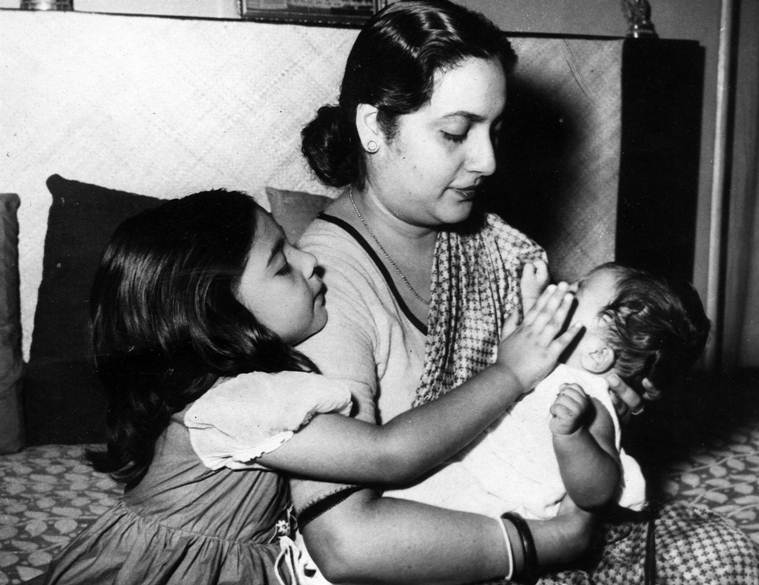 Bimal Roy’s youngest daughter Ratna and her three-month-old brother with their mother. (Express archive photo on 06.05.1955)
Bimal Roy’s youngest daughter Ratna and her three-month-old brother with their mother. (Express archive photo on 06.05.1955)
Recalling her last night with her husband, Manobina shared, “He didn’t know how to leave his things. He was worried about the studio, about his staff. He felt he had taken them under his shelter, he was responsible for them. He kept saying, ‘What will happen to those people who depend on me?’ I remember on his last day, he was feeling agony. I knew what he was going through, so I told him, ‘I’ll take over’. He asked, ‘You will?’ I said, ‘Yes I will.’ He uttered his last words, ‘Everything belongs to you’ and he closed his eyes never to get out of it again.”
Bimal Roy died on January 7, 1966, of lung cancer. He left behind a rich legacy of films which continue to inspire filmmakers for generations.
Click for more updates and latest Bollywood news along with Entertainment updates. Also get latest news and top headlines from India and around the world at The Indian Express.
Photos
May 01: Latest News
- 01
- 02
- 03
- 04
- 05



